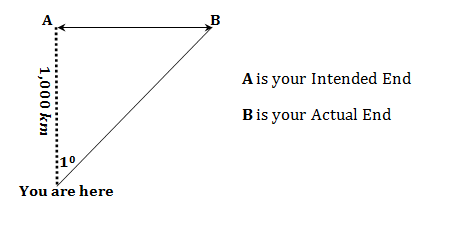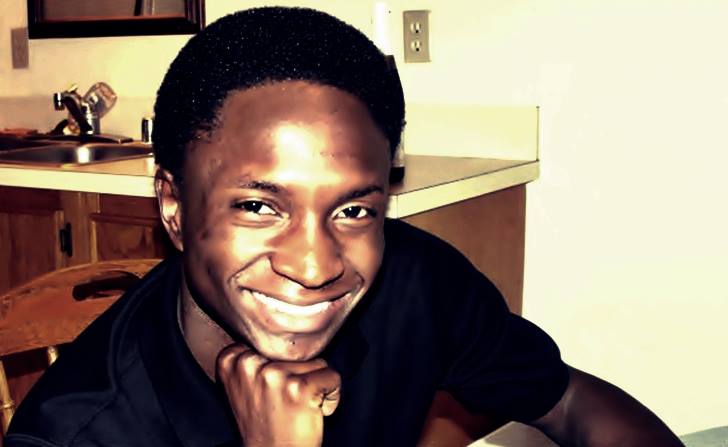FEMI TAIWO ON MONDAY: Angles of Elevation and Depression


[This piece is dedicated to the memory of my high school math teacher and friend, Mr. Yusuf, who passed away this year after a protracted battle with illness]
One of the earliest topics I fell in love with in Mathematics is Angles of Elevation and Depression. It is at the heart of trigonometry. The questions are usually simple: you had a triangle, and given the length of the sides, are required to find the magnitude of the angles between them. Sometimes, for a right-angled triangle (one with a 90-degree angle), you were given the angle and the length of one side and needed to calculate the length of the remaining sides. I had great fun working these little geometric puzzles. I never knew why I was so intrigued with them until several years later.
Imagine you are at sea and a thousand kilometers (km) from your desired harbor, what happens if you make a degree change in course? I have drawn the picture below. Note that I have made some simplifying assumptions in this problem e.g. the earth’s curvature has been gleefully neglected and the drawing is not to scale (exaggerated for emphasis).
It turns out that an error of just one degree will make you land over 17km away from your intended end (Point A). If you held a compass, you would see how easy it is to mistake a degree (there are 360 of them!). At Point B, the actual end, you are completely lost because Point A will be well and truly out of sight. Another point worth noting is that the distance between where you are now and Point B (called the hypotenuse) is longer than between here and Point A. So not only have you arrived at a place you don’t want to be, you have also spent more time and resources getting there! This double whammy is why it is so critical to get it right the first time.
There are many lessons you can derive from this natural philosophy and a word is enough for the wise. But just to have a sense of closure, I will share some of my thoughts on how this trigonometric principle applies to life.
First, develop a method to constantly check if you are still on the path you are meant to be. Don’t get to Point B before you know you are lost. You are lost from the very moment you deviated, be it ever so slightly, from the journey management plan. If you catch and fix your errors early, you will save yourself from a lot of headaches down the line.
Second, the distance between A and B was over 17km because you were a thousand km out. If you were only a hundred km from the harbor, the error would be ten times less as well. There is a proportionality built into this. The lesson here is that the farther you want to go, the more important it is to be accurate.
Lastly, and this goes without saying, the larger the degree change in course, the bigger the error. If you turned 90 degrees you’d be completely lost and at 180 degrees, you are heading back to where you started.
As another year rapidly approaches, this is the best time to set your target, chart your course and integrate self-correcting mechanisms in your plan. I wish you the very best.
Established in March 2013, JarusHub is a Nigerian information hub with focus on career and management. It is rated Nigeria's most authoritative destination for online career resources. It parades an array of Nigerian professionals who share their career experiences with a view to bridging career information gap and mentoring a generation to success. Whether you're a student, a recent graduate or an established professional, or even an executive, you will always find something to learn on JarusHub. All enquiries to jarushub@gmail.com or 0808 540 4500. Facebook: www.facebook.com/jarushub; Twitter: @jarushub or @mcjarus.
Path to Big 4: Stream 11
April 4, 20245 Best Useful Applications Of AI in Modern World
November 17, 2023



